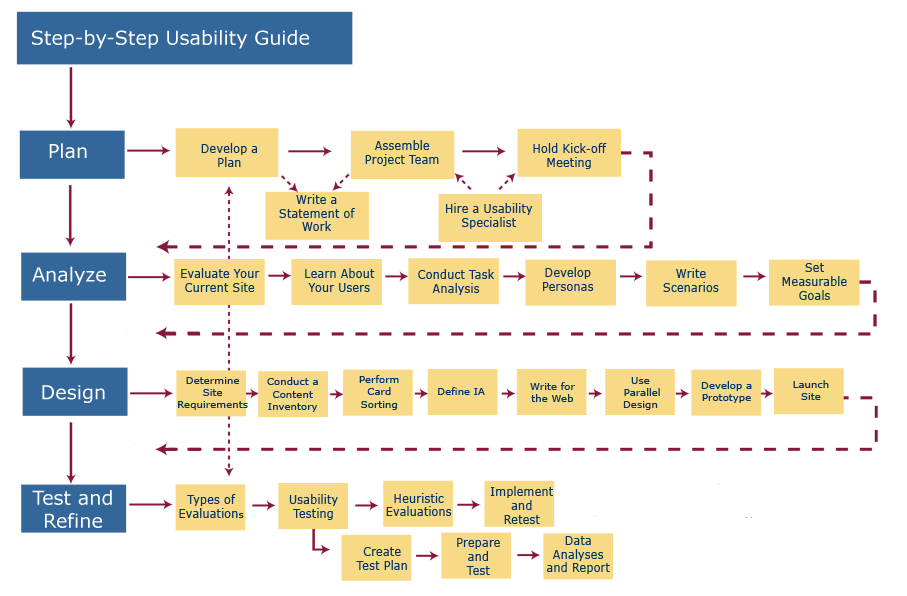Design processes and models
Introduction
A simple search of the web will result in a plethora of models describing a variety of design processes. Their main aim is to define steps in design processes that can be either linear or iterative. Some areas of focus of design processes and their models are:
- product development
- software development
- web site development
- systems design
- project management phases
- instructional design
- User-centered design
- Interaction design, user experience and usability
Examples of design process models
ADDIE
ADDIE, an acronym for Analyse, Design, Develop, Implement, Evaluate, is intended and used as a model for instructional design but generic enough to be applicable to a multitude of design objectives.
Double diamond model
The design council's 'Double diamond' design process model was the result of a study of design processes used by 11 companies in 2009.
- Discover - gather ideas and user needs
- Define - alignment of business objectives to user needs
- Develop - solutions developed and tested, iteratively
- Deliver - launching, testing and evaluation, feedback
A Model of Pervasive Usability in Website Design [1]
The Model of Pervasive Usability from Usability First offers five phases:
- Requirements Analysis
- Conceptual Design
- Mockups/Prototypes
- Production
- Launch and Maintenance
Generic web design process models
From Smashing Magazine[2]
- Planning - includes needs and requirement analyses, site planning, information architecture
- Design - mockups and prototyping, designing interaction, flows
- Development - coding, building and testing functionality and templates, content integration
- Launch - testing, transfer to live server, testing,
From the UX movement
- Content - goal and information
- Information architecture - site structure and navigation, user testing
- Visual design - graphic design, user interface design, user testing
- Development - functioning complete implementation according to design specifications
User-Centered Design Process
Usability.gov presents an interactive Step-by-step Usability Guide of a 4-step process: plan, analyze,design, and test and refine. Each step presents sub-steps and methods used in user-centered design.

Other models
A detailed infographic from 84 ideas shows steps and roles and responsibilities on both the designer and client sides.
Other models [3], [4], [5] separate the planning/analysis phase into more precise steps, separating needs analysis, from information architecture and design specifications. Design and development phases are often distinct phases and include definition and coding of design and functions. Occasionally the content creation phase is distinguished as a separate phase, but more often it falls under development. The final phases are further divided into 'going live'/launch, and an evaluation phase of testing and maintenance.
Links
- Some more models not specifically related to general UCD design processes from University of British Columbia's d-studio
References
- ↑ Usability First - About Usability - Website Design | Usability First. (n.d.). Retrieved January 26, 2012, from http://www.usabilityfirst.com/about-usability/website-design/
- ↑ Reimer, Luke (2011). Following A Web Design Process - Smashing Magazine. Retrieved 26 January 2012 from http://www.smashingmagazine.com/2011/06/22/following-a-web-design-process/
- ↑ Web site development process - The processes and steps. (n.d.). Retrieved January 26, 2012, from http://www.macronimous.com/resources/web_development_life_cycle.asp
- ↑ Website Development Process | Computers & Internet Technology. (n.d.). Retrieved January 26, 2012, from http://www.cbwc-ontario.org/website-development-process.html
- ↑ Waterfall model - Wikipedia, the free encyclopedia. (n.d.). Retrieved January 26, 2012, from http://en.wikipedia.org/wiki/Waterfall_model